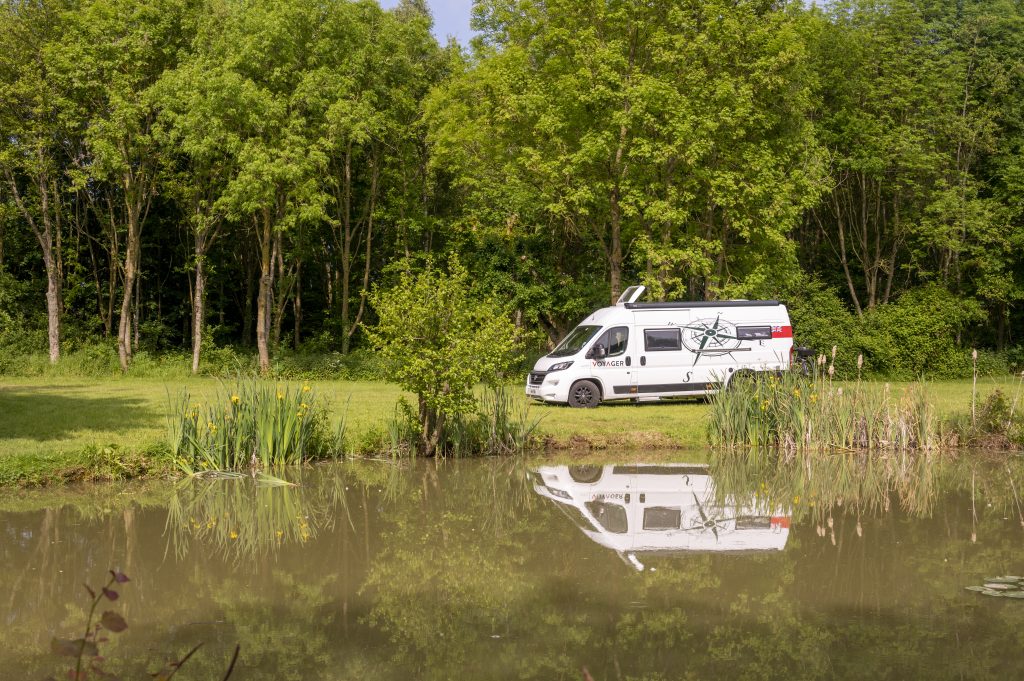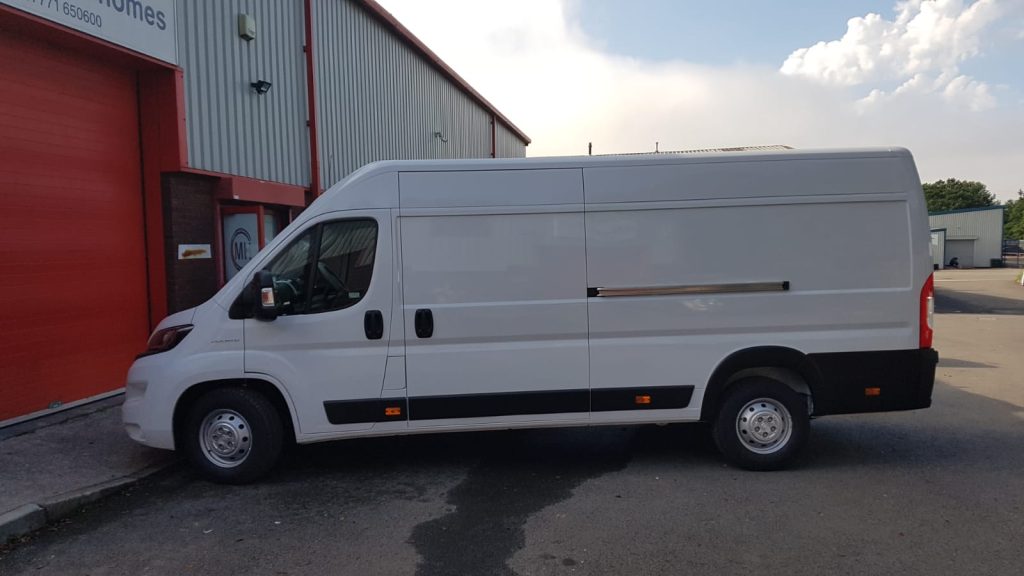
We are often asked how it was that we got involved with campervans and why we bought Voyager. Why on earth would globe trotting sailors stop sailing the seven seas. Swapping them for the highways and byways of the United kingdom and continental Europe seems somewhat strange. So here is our story!
It began just six hours after we left Bermuda in our sailing yacht, heading north to New England, the weather turned nasty. For the next four days, we battled the elements, fighting the seas to maintain our course. All the while, the winds whipped the Gulf Stream into a bubbling cauldron of salt-streaked foam that stung our eyes.
That was when we began to us ask ourselves if we should sell the yacht and buy a campervan. We were hungry, cold, wet through and very tired. Suddenly a yachtlike craft with four wheels planted very firmly on an unmoving solid surface seemed wonderfully appealing.

Despite having crossed the beleaguered Bermuda Triangle on many occasions, this particular passage was the worst we had ever encountered. We were voyaging from Hamilton to Newport in Rhode Island. If you have ever read the Perfect Storm or seen the movie, you might have an idea of the pain and agony that we were going through.
Not easy
But, just like it did on that occasion, calm followed storm. Days later we were anchored snugly in a pretty harbour, fully rested and once again at peace with the world. We may never have progressed the campervan idea any further were it not for the timing of the Rhode Island RV & Camping Show. It was taking place at the convention centre in nearby Providence.
Of course we went to the show, if only to honour the promise we made to each other while wave hopping in the storm. Once inside the show we were mesmerised. We knew then that one day, we had to have one.

As travel journalists, whose speciality has always yachting, we have lived and loved the minimalistic cruising lifestyle. We have voyaged to and from every blissful Caribbean Island anchorage on board our own sailing yacht. We have been there, done that and quite literally bought the T shirt.
Finally after many years sailing in Superyachts it is time for us to finally swallow the anchor and come ashore and buy that road worthy vehicle!

Back in the UK we began to investigate what was on the market that best suited our needs. We quickly established that there were lots of nice features on lots of nice vans. But not a single one that had all the features that were on our list of requirements. Clearly we needed a custom build. Not being the handy types, we realised we were going to have to find someone to build it for us.
Yachting experience
Using all our yachting experience, we conceived and designed the ultimate luxury yacht on wheels. It was perhaps around that time we started to call our idea Voyager. Simply because sailors always name their yachts. We then ordered a brand new cargo carrying panel van, gave it a luxury makeover, adding every conceivable extra. Our chosen donor van, an Italian Fiat Ducato Maxi 35 Multijet II with the 6.38 metre extended wheelbase and a high-top (H2) roof line.

We chose the 2.3 litre 160 hp engine size, specified the 9 speed automatic gearbox and beefed up the suspension to make it easier, more comfortable and safer to drive. The added, In-cab air conditioning and heated armchair seats for the Captain and the Navigator, we knew would get a full leather trim, using superyacht quality hides. That would turn the drivers cab into the navigator’s bridge of our luxury land yacht.
Luxury fit out
And that was just the start of some of the features we specified. Our list of luxurious specifications for both the base vehicle and the conversion has truly set Voyager apart from standard production built motorhomes.

Specifications drawn up, we then selected Celtic Motorhomes a conversion company in Caerphilly whose attention to detail we thought to be first class, and we commissioned them to build it for us.
This company has now morphed into Voyage Adventure Vans and their build quality has if anything improved as a result.
We are delighted with what they built for us. The 6.4 metre length is just right to accommodate a full, king size bed which, in our chosen layout, runs longitudinally set above a capacious garage in which we keep all of camping accessories and accoutrements.

The double bed is in fact two singles with a swallow tail step access between then. Each side lifts electrically to give internal access to the garage space below. We hate having to make a bed up every night and with our bedroom right aft, there is plenty of room for our seating and dining area in the front, leaving the centre section clear for the bathroom and galley.
Solar panels
With two 175 watt solar panels from Victron mounted on the roof, two massive 100 watt leisure lithium batteries from Relion and a 2 kilowatt marine inverter from Victron we are very able to set sail on the high roads and live off the grid for days at a time.
When it came to ease of use, we spared no expense and installed a fully automatic computerised self levelling system. Operated hydraulically this is the campervan equivalent on-anchor stabilisation.

Today no self respecting superyacht sets sail without having Zero Speed Stabilisation fitted. It is however something of a rarity to find such luxury on four wheels. Installing self levelling is not only easy and hassle free, it is, without doubt the safest of all options.
Upon arrival at a chosen camping spot the device automatically straightens Voyager up in just two minutes, offering a horizontally level position at the push of a button.
Self levelling system
For road vehicles not equipped with such a device a great deal of effort is involved stabilising the motorhome each time it is stopped. Indeed, we have witnessed attempts to level a van that have resulted in a whole trip being abandoned. That was when a vehicle fell off physical chocks and damaged brake fluid lines on the underside of the van.

Celtic motorhomes built Voyager to a very high standard. They gave us exactly what we wanted in a campervan. And it was not long before Voyager and her crew took to the road exploring Great Britain and continental Europe.
Along the way we discovered the camaraderie offered by the Motor Caravanners Club and began reading their magazine. As you might guess our pens are never stationary, and the camera is always to hand. So it was inevitable that we should start writing for the magazine.

So here we are, yachting journalists turned campervan specialists and we are loving every minute of it.
But we have not completely severed our ties with the sea! As can be seen from our Maritime pages, we remain very active in writing about the sea and those that sail on her.
